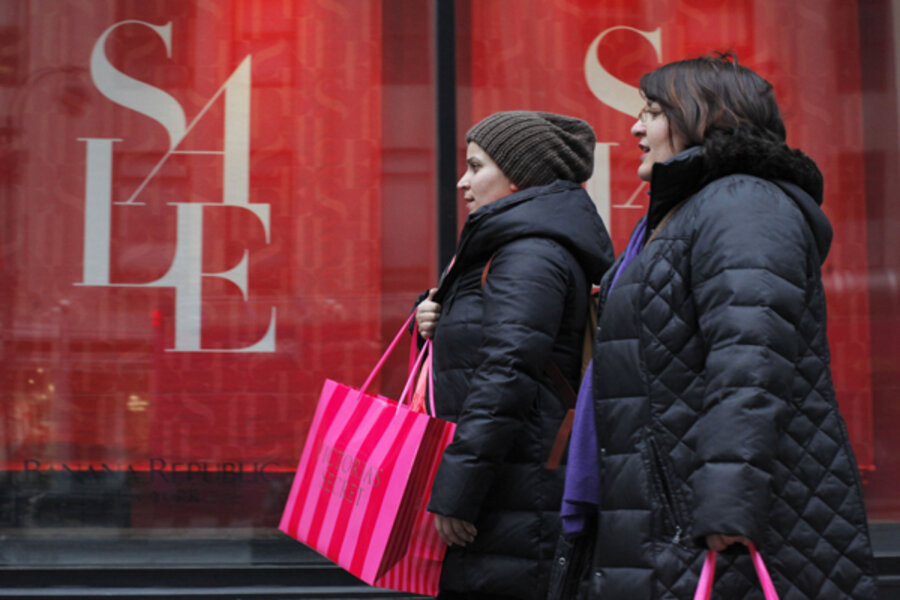Mattel and Hasbro 'terrified': Do kids want gadgets more than toys?
Loading...
The 2012 holiday season may have been the worst for retailers since the financial crisis, with sales growth far below expectations, forcing many to offer massive post-Christmas discounts in hopes of shedding excess inventory. While chains like Wal-Mart Stores Inc and Gap Inc are thought to have done well, analysts expect much less from the likes of Barnes & Noble Inc and J. C. Penney Co.
The latest sign of trouble came from MasterCard Advisors Spending Pulse, which reported holiday-related sales rose 0.7 percent from Oct. 28 through Dec. 24, compared with a 2 percent increase last year. The preliminary estimate from SpendingPulse was in line with other estimates showing weak growth during the holiday season, when retailers can book about 30 percent of annual sales -- and in many cases, half of their profits.
While hot toys such as certain Mattel Inc Barbie dolls performed well, toymakers worry that traditional children's gifts may lose out long-term to high-tech gadgets.
“The top two guys, Mattel and Hasbro, they are terrified,” Sean McGowan, managing director of equity research at Needham & Company, told the Financial Times. “They should be terrified, but the official party line is they’re not terrified.”
On Tuesday, the International Council of Shopping Centers and Goldman Sachs Weekly Chain Store Sales Index showed sales rose only 0.7 percent in the week ended Saturday.
The estimates are still preliminary and focus on sales, not profits. A handful of retailers will post sales data next week, but most, including heavyweights like Wal-Mart, will not report results at the register until they release financial results in mid-February.
Analysts have also said many retailers entered the season with inventories under control, which could help protect margins.
Still, the latest holiday season sales could end up the weakest since 2008, during the last recession, when sales dropped 4.4 percent in November and December.
"The broad brush was Christmas wasn't all that merry for retailers, and you have to ask what those margins look like if the top line didn't meet their expectations," said Kim Forrest, senior equity research analyst at Fort Pitt Capital Group in Pittsburgh.
Analysts and industry groups already expected sales to grow at a slower pace than in 2011 and 2010. The National Retail Federation predicted 4.l percent sales growth, versus a 5.6 percent increase a year earlier.
But growth of less than 1 percent is weaker than even some of the most pessimistic forecasts, and markets reacted accordingly.
The S&P retail index fell 1.8 percent in midday trading Wednesday. The 13 weakest stocks in the broader S&P 500 were all retailers or consumer brands.
INVENTORY CRUSH
One concern for retailers is that weak sales will mean an excess of inventory that will force some to slash prices.
Among other brands, Barnes & Noble offered 50 percent discounts in stores via email promotions on Wednesday, while Ann Inc had half-off at its Loft stores, and Bloomingdale's promoted discounts of up to 75 percent in some cases.
"Retailers are no longer chasing sales, they are chasing inventory management. That means the discounts that they would have liked to be at 50-60 (percent) off have climbed to 75 to even 80 (percent) off," said Marshall Cohen, chief industry analyst at The NPD Group.
Erica Ayala, 31, a mother of four who lives in New York's Harlem neighborhood, waited until the day after Christmas to shop for that very reason, saving more than $150 on kids' clothes alone at Gap's Old Navy chain.
"You can't go wrong with that," she said.
A variety of factors were thought to be at fault, starting with Superstorm Sandy, which depressed sales in the Northeast in late October and early November.
Sales recovered in the second part of November, with early hours and promotions helping drive traffic during the "Black Friday" weekend after Thanksgiving, analysts said.
But there was a deep lull in early December as a winter storm in parts of the United States may have limited sales, said Michael McNamara, vice president of research and analysis at MasterCard SpendingPulse.
The SpendingPulse data estimates sales of apparel, electronics, luxury goods, online and furnishings across all payment types, including credit cards, cash and checks, and not just the MasterCard payment network.
On top of that, there were fears that taxes will rise in the new year if Washington cannot negotiate a solution to the end-of-year "fiscal cliff" dilemma.
A recent Ipsos poll for Reuters found that only 17 percent of shoppers were spending less due to cliff fears, though analysts said the damage was still done.
"The government usually does not have a role in holidays but this year they did. They got right in the midst of it, the timing couldn't have been any worse," NPD's Cohen said.
BRIGHT SPOTS
One bright spot has been online sales, which continue to grow at a faster pace.
On Christmas Day, online sales jumped 22.4 percent, outpacing the 16.4 percent increase in 2011, according to IBM Digital Analytics Benchmark, which tracks more than 1 million e-commerce transactions a day from 500 U.S. retailers.
Whether online or off, some of the winning retailers were expected to be Wal-Mart, which attracted shoppers with early deals on the night of Thanksgiving and kept its focus on value, and apparel chains like Gap Inc, whose bright sweaters were successful, according to analysts.
Toys sold well, and hot items that were harder to find later in the season included certain Mattel Inc Barbie dolls and LeapFrog Enterprises Inc's LeapPad2 tablet computer, according to B. Riley Caris analyst Linda Bolton Weiser.
For retailers who have struggled, analysts said all hope was not lost. Many have fiscal quarters that end in January, so they still have time to benefit from a post-Christmas rebound.







